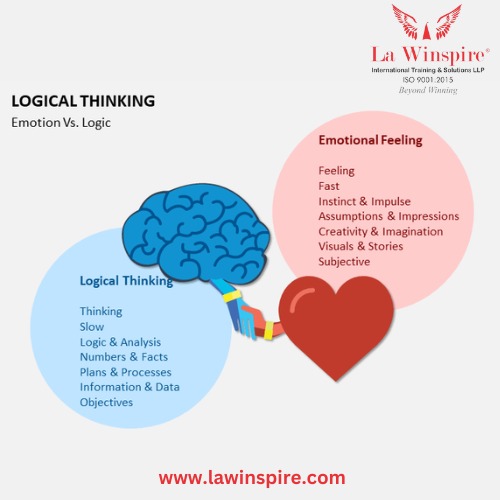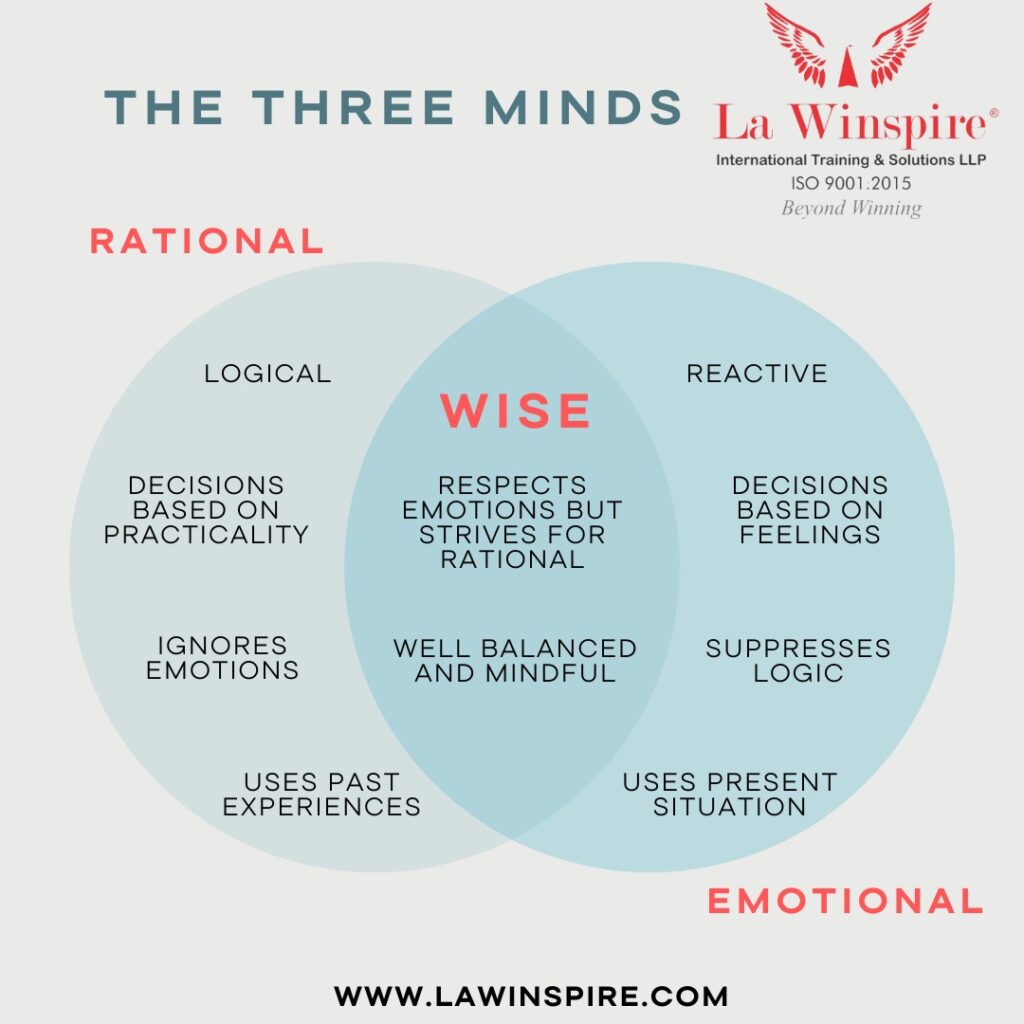The complete guide to visualization for logical and rational people
Visualization is often associated with creative or abstract thinking, but it’s equally powerful for logical and rational minds. For individuals who approach the world analytically, visualization offers a structured way to achieve clarity, enhance decision-making, and foster personal growth.
Dr. P Madhurima Reddy, a distinguished Peak Performance Trainer and Life Coach, has spent over 26 years helping individuals harness techniques like visualization to reach their goals. This guide outlines visualization techniques tailored for rational minds, emphasizing a scientific and logical approach.
What Is Visualization?
Visualization is the practice of creating mental imagery to simulate future outcomes, solve problems, or rehearse scenarios. It’s not just a tool for dreamers; logical thinkers can use it to plan, strategize, and make informed decisions. By pairing visualization with critical thinking, you can strengthen your ability to visualize success in a way that feels logical and grounded.
Benefits of Visualization for Rational Minds
- Improved Decision-Making
Visualization for decision-making involves mentally rehearsing the consequences of various options, allowing you to choose the most logical course of action. - Enhanced Focus and Clarity
Using visualization techniques to break down complex ideas into simpler mental images enhances focus and sharpens your understanding of intricate problems. - Goal Achievement
Goal-oriented visualization aligns your actions with desired outcomes, making your plans feel more tangible and achievable. - Stress Reduction
Visualizing success reduces anxiety by fostering confidence and preparedness. For rational thinkers, this aligns with reducing uncertainty through logical planning.

Rational Visualization Strategies
For logical thinkers, the approach to visualization must be systematic and evidence-based. Here are some key strategies:
- Focus on Specifics
Abstract imagery may not resonate with rational minds. Instead, focus on creating clear, specific images of processes or outcomes. For example, if your goal is a successful presentation, visualize each step: preparing slides, delivering confidently, and answering questions effectively. - Use Data to Inform Visualization
Incorporate factual information and measurable metrics into your mental imagery. This creates a visualization process rooted in reality, making it more logical and actionable. - Combine Visualization and Critical Thinking
Evaluate the feasibility of your visualization. Ask yourself questions like: - What challenges might arise?
- Are my goals realistic based on the resources available?
- Apply Mental Imagery Techniques
Use structured techniques, such as imagining step-by-step actions or mapping out scenarios visually, to reinforce logical problem-solving skills.
Scientific Visualization Methods
Visualization isn’t just an abstract concept; it has a scientific basis. Research shows that mental imagery activates similar brain regions as performing the actual task, helping to reinforce neural pathways.
For logical thinkers, these methods are particularly effective:
- Visualization for Decision-Making: Mentally simulate the outcomes of various choices to assess their feasibility.
- Scenario Planning: Envision multiple potential outcomes and prepare strategies for each.
- Reverse Engineering: Visualize the end goal and work backward to map out the steps required to achieve it.
Visualization and Logical Thinking
Visualization complements logical thinking by adding an emotional and visual layer to analytical processes. For instance:
- Problem-Solving: Use visualization to mentally experiment with different solutions.
- Planning: Envision a project’s timeline, anticipating potential obstacles and planning how to overcome them.
This synergy between visualization and logical thinking enhances your ability to approach challenges holistically.

Practical Visualization Tips for Rational Minds
- Dedicate Time to Visualization Exercises
Set aside 5-10 minutes daily for focused visualization. Treat it as a mental rehearsal for success. - Visualize Processes, Not Just Outcomes
Rather than picturing only the end goal, imagine the step-by-step actions required to achieve it. This logical approach makes visualization feel more practical. - Write It Down
Pair mental imagery with written plans. Mapping out your visualization reinforces your logical understanding of the steps involved. - Leverage Tools
Use diagrams, charts, or mind maps to complement your visualization exercises. Tools like these help bridge the gap between abstract thinking and logical analysis
Goal-Oriented Visualization for Personal Growth
For logical individuals, visualization for personal growth involves creating realistic, actionable mental images of your development journey. Whether it’s improving a skill, building confidence, or achieving career milestones, visualization can make your goals more attainable.
Steps to Goal-Oriented Visualization
- Define Your Goals: Be clear and specific about what you want to achieve.
- Break Goals Into Smaller Steps: Visualize each stage, focusing on actionable tasks.
- Incorporate Feedback: Use past successes and challenges to refine your visualizations.
- Revisit and Adjust: Regularly review and adapt your visualization as you make progress
Visualization Exercises
- Mental Rehearsal: Practice visualizing a specific event or task. Imagine every detail, from the environment to your actions and emotions.
- Outcome Simulation: Picture the result of achieving your goal. Include measurable metrics, like hitting a sales target or completing a project on time.
- Problem Visualization: Identify a current challenge and mentally experiment with various solutions.
- Daily Visualization Practice: Spend a few minutes every morning visualizing your day’s goals and how you will achieve them.
Visualization for Personal Growth
Dr. Madhurima Reddy emphasizes the role of visualization in unlocking personal potential. As a seasoned Life Coach, she integrates visualization techniques with mindset training to help clients achieve measurable results.
Through her programs at La Winspire International Training & Solutions LLP, she teaches:
- How to use logical visualization techniques for achieving goals.
- Strategies for balancing analytical thinking with creative visualization.
- Practical exercises to foster self-confidence and decision-making skills.
Learn more about her methods and workshops at La Winspire.

FAQs
1. What is visualization for rational minds?
It’s the use of structured, logical mental imagery to plan, solve problems, and achieve goals effectively.
2. How does visualization benefit logical thinkers?
Visualization enhances decision-making, sharpens focus, and helps align analytical strategies with emotional clarity.
3. What are some practical visualization tips?
Dedicate daily time for visualization, focus on processes as well as outcomes, and combine mental imagery with tools like charts and written plans.
4. Can visualization help with critical thinking?
Yes, it complements critical thinking by enabling you to simulate scenarios, test solutions, and plan strategically.
5. How does Dr. Madhurima Reddy’s approach to visualization differ?
Dr. Reddy combines scientific visualization methods with mindset training, tailoring techniques to suit logical and rational individuals seeking personal growth.
Visualization isn’t just for the creatively inclined; it’s a powerful tool for logical and rational thinkers. By adopting a structured approach and leveraging scientific methods, you can use visualization to achieve your goals, enhance decision-making, and foster personal growth. Empower your logical mind with visualization and unlock your full potential!
